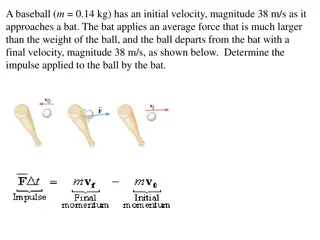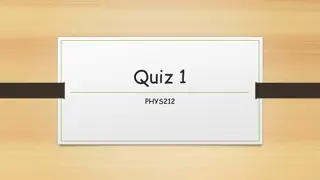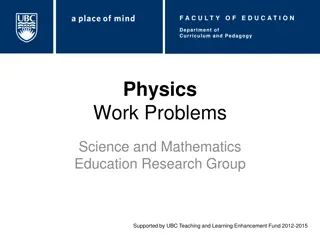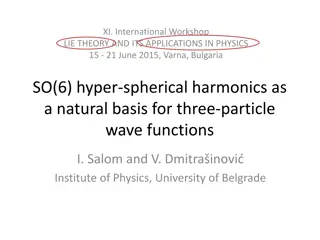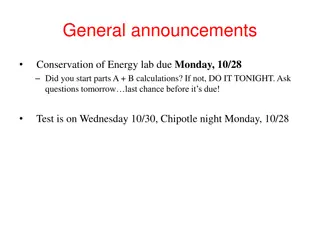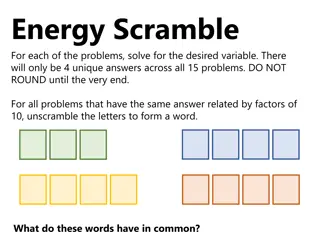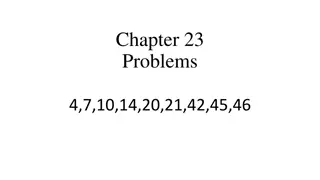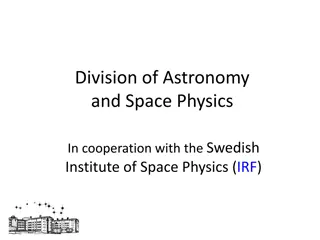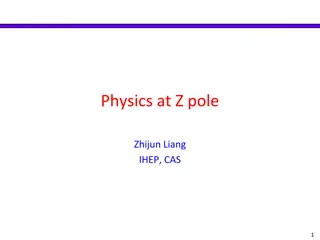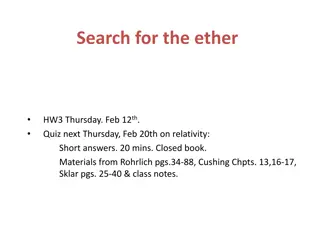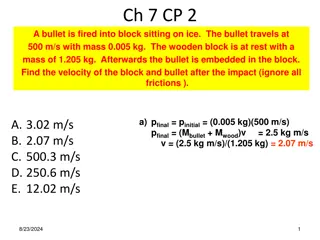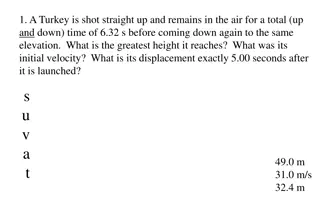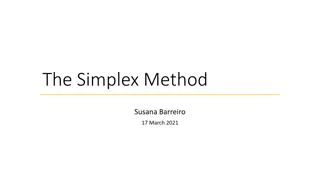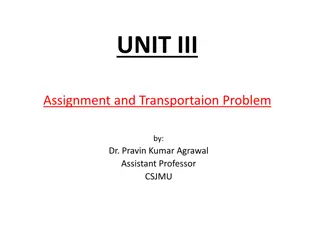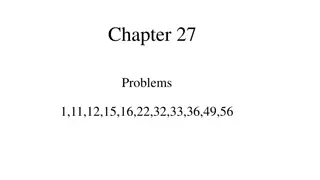Physics Problems and Solutions
Solve physics problems involving forces, acceleration, work, energy, tension, ski lift power, and circular motion. Visual aids provided for better understanding.
Download Presentation

Please find below an Image/Link to download the presentation.
The content on the website is provided AS IS for your information and personal use only. It may not be sold, licensed, or shared on other websites without obtaining consent from the author. Download presentation by click this link. If you encounter any issues during the download, it is possible that the publisher has removed the file from their server.
E N D
Presentation Transcript
1997B1. A 0.20 kg object moves along a straight line. The net force acting on the object varies with the object's displacement as shown in the graph above. The object starts from rest at displacement x = 0 and time t = 0 and is displaced a distance of 20 m. Determine each of the following. a. The acceleration of the particle when its displacement x is 6 m. b. The time taken for the object to be displaced the first 12 m. c. The amount of work done by the net force in displacing the object the first 12 m. d. The speed of the object at displacement x = 12 m. e. The final speed of the object at displacement x = 20 m.
1975B7. A pendulum consists of a small object of mass m fastened to the end of an inextensible cord of length L. Initially, the pendulum is drawn aside through an angle of 60 with the vertical and held by a horizontal string as shown in the diagram above. This string is burned so that the pendulum is released to swing to and fro. a. In the space below draw a force diagram identifying all of the forces acting on the object while it is held by the string. b. Determine the tension in the cord before the string is burned. c. Show that the cord, strong enough to support the object before the string is burned, is also strong enough to support the object as it passes through the bottom of its swing.
1974B7. A ski lift carries skiers along a 600 meter slope inclined at 30. To lift a single rider, it is necessary to move 70 kg of mass to the top of the lift. Under maximum load conditions, six riders per minute arrive at the top. If 60 percent of the energy supplied by the motor goes to overcoming friction, what average power must the motor supply?
1992B1. A 0.10-kilogram solid rubber ball is attached to the end of an 0.80 meter length of light thread. The ball is swung in a vertical circle, as shown in the diagram above. Point P, the lowest point of the circle, is 0.20 meter above the floor. The speed of the ball at the top of the circle is 6.0 meters per second, and the total energy of the ball is kept constant. a. Determine the total energy of the ball, using the floor as the zero point for gravitational potential energy. b. Determine the speed of the ball at point P, the lowest point of the circle. c. Determine the tension in the thread at i. the top of the circle; ii. the bottom of the circle. The ball only reaches the top of the circle once before the thread breaks when the ball is at the lowest point of the circle. d. Determine the horizontal distance that the ball travels before hitting the floor.
A simple pendulum consists of a bob of mass 1.8 kg attached to a string of length 2.3 m. The pendulum is held at an angle of 30 from the vertical by a light horizontal string attached to a wall, as shown above. (a) On the figure below, draw a free-body diagram showing and labeling the forces on the bob in the position shown above. (b) Calculate the tension in the horizontal string. (c) The horizontal string is now cut close to the bob, and the pendulum swings down. Calculate the speed of the bob at its lowest position.
1979B1. From the top of a cliff 80 meters high, a ball of mass 0.4 kilogram is launched horizontally with a velocity of 30 meters per second at time t = 0 as shown above. The potential energy of the ball is zero at the bottom of the cliff. Use g = 10 meters per second squared. a. Calculate the potential, kinetic, and total energies of the ball at time t = 0. b. On the axes below, sketch and label graphs of the potential, kinetic, and total energies of the ball as functions of the distance fallen from the top of the cliff c. On the axes below sketch and label the kinetic and potential energies of the ball as functions of time until the ball hits
1975B1. A 2-kilogram block is released from rest at the top of a curved incline in the shape of a quarter of a circle of radius R. The block then slides onto a horizontal plane where it finally comes to rest 8 meters from the beginning of the plane. The curved incline is frictionless, but there is an 8-newton force of friction on the block while it slides horizontally. Assume g = 10 meters per second2 a. Determine the magnitude of the acceleration of the block while it slides along the horizontal plane. b. How much time elapses while the block is sliding horizontally? c. Calculate the radius of the incline in meters.










